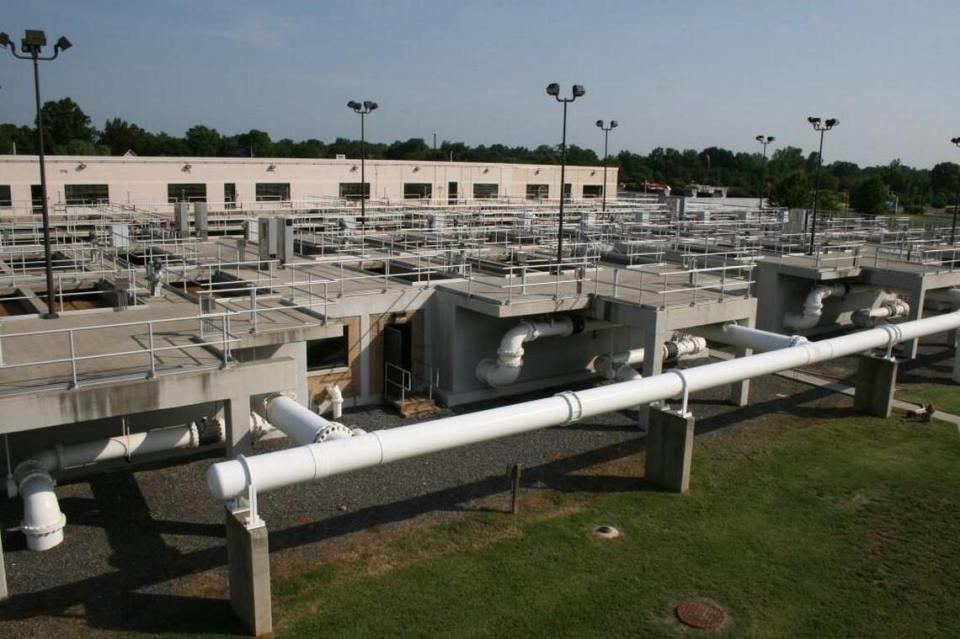Wet weather and a naturally occurring mineral are the reasons some people saw discolored water this week in the Rock Hill region.
On Tuesday, Rock Hill Utilities posted on its Facebook page that “various locations across the city’s water distribution system” reported discolored water. The utility department was working to identify the cause but said that heavy rainfall was a likely reason, the city stated. Lake Wylie is the city’s raw water source.
At the time of the post, the utilities department noted that water quality at the city plan met “all health and safety standards.”
Any water issues in Rock Hill have a countywide impact.
Rock Hill draws water from the lake and distributes not only to its citizens, but also to wholesale customers York County, Fort Mill, Tega Cay, the Catawba Indian Nation and private suppliers. Fort Mill posted the same water discoloration information on its town Facebook page.
Reports of discolored water had subsided by late Wednesday afternoon, city spokeswoman Katie Quinn said. Customers who still have concerns about discoloration can flush cold water in a bathtub to move water through their pipes, she said.
“The water quality meets all regulatory standards, but the rain apparently increased naturally occurring manganese that created a color issue in a few places,” Quinn said.
Manganese is a mineral often found combined with iron. It’s also found in nuts, whole grains and leafy vegetables. In heightened levels it can cause water to appear brown or black.
The Centers for Disease Control and Prevention posts limits for manganese concentrations in bottled water and other sources, but notes drinking water exposure isn’t likely to have adverse health impacts.
Recent water and sewer rate increases in Rock Hill to fund wastewater plant upgrades meant higher rates in other communities, too. Five years ago, a pipe burst at the city water filter plant that put all of York County under a boil water advisory.
One Rock Hill pipe wiped out water service across York County. Could it happen again?
What causes water discoloration?
Catawba Riverkeeper Brandon Jones leads an environmental protection and advocacy group spanning counties in both Carolinas that feed into the Catawba River.
Discolored water can come from a range of sources like algal blooms in the summer to aeration issues, he said. Heavy rainfall often turns the river and area lakes brown as material washes into it.
“This is everything from your neighbor who doesn’t do a great job picking up after their dog to large agricultural spreading fields, a little bit of break dust, oil from every car,” Jones said. “And of course the sediment itself.”
Yet a brown lake from heavy rain wouldn’t, on its own, typically lead to discolored drinking water.
“That would be unusual,” he said. “Most of the filtration is going to pull off those particles.”
Any water provider with more than 25 users will have strict regulations with public information on water quality, Jones said.
Customers should check with their water provider if there are quality concerns. The biggest issue is bacteria, something providers test for at least hourly and notify the public if there’s a problem, Jones said.
Cities like Rock Hill routinely test wells throughout their systems but it there can be line breaks between where a municipality tests and a home that could lead to water discoloration, Jones said.
Heavy rain and sewage spills
Large storms can put stress on water and sewer infrastructure. Wastewater overflows, or sewage spills, often are tied to heavy rain.
The South Carolina State Climatology Office reports a typical January brings between 3.5 and 4 inches of rain to the Rock Hill region. A National Weather Service station in Rock Hill measured 3.3 inches of rainfall just on Jan. 9. Media outlets statewide reported heavy rain as a storm blanketed the state, in places bringing reports of daily record rainfall.
The South Carolina Department of Health and Environmental Control had 70 reported wastewater spills Jan. 9 and 10. The state had 71 spills in all of November and December combined.
The Rock Hill region had three of those early January spills.
A manhole in front of 635 Morris St. in Rock Hill overflowed from 2:15 p.m. to 7 p.m. on Jan. 9. The city estimated the spill at 21,375 gallons of wastewater. Heavy rainfall is the listed reason.
Two Tega Cay manholes overflowed. One at 2142 Manawa Lane spilled from about 5:30 p.m. Jan. 9 to 9 a.m. Jan. 10. It released an estimated 12,000 gallons of wastewater into Lake Wylie. The other at 26049 Neptunes Landing ran from 2:40 p.m. on Jan. 9 to 10 a.m. Jan. 10. An estimated 7,200 gallons got into the lake. Rain is the listed reason for both spills.
For comparison, there were 22 spills across York, Lancaster and Chester counties last year.

Signup bonus from





